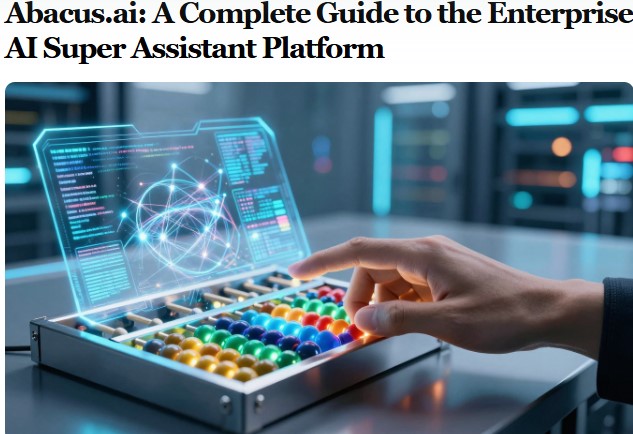What is Generative AI?
Generative AI is a type of artificial intelligence technology that can create various types of content like text, images, audio, and synthetic data. The recent excitement around generative AI is due to the user-friendly interfaces that allow for the quick creation of high-quality text, graphics, and videos.
Although generative AI has been around since the 1960s in chatbots, it wasn’t until 2014 with the introduction of generative adversarial networks (GANs) that it could produce authentic images, videos, and audio of real people.
This advancement has led to opportunities in movie dubbing, and educational content, but also raised concerns about deepfakes and cybersecurity attacks. Recent advances in transformers and large language models have made generative AI more mainstream.
Transformers enable researchers to train larger models without labeling all the data beforehand, resulting in more in-depth answers. These models can track connections between words across various sources, not just individual sentences.
Generative AI models with billions or even trillions of parameters can now write engaging text, create realistic images, and even generate entertaining sitcoms on the spot. Tools like Dall-E can automatically generate images from text descriptions or create text captions from images.
Despite these advancements, generative AI is still in its early stages and faces challenges with accuracy, bias, and hallucinations. However, the potential of this technology to transform businesses by writing code, designing drugs, developing products, and improving supply chains is promising. Nevertheless, for tasks requiring nuanced understanding and creativity, like crafting intricate texts and academic papers, relying on a skilled ghostwriter remains unparalleled.
How does Generative AI work?
Generative AI works by starting with a prompt in the form of text, images, videos, or other inputs that the AI system processes. Various AI algorithms then generate new content in response to the prompt.
Early versions required complex processes, but now, user-friendly interfaces allow for plain language requests and customization of results. Generative AI models combine different AI algorithms to process content. For text, natural language processing techniques transform characters into sentences, parts of speech, entities, and actions represented as vectors.
Images are also transformed into visual elements expressed as vectors, but these techniques can encode biases present in the training data. Developers use neural networks like GANs and variational autoencoders to generate new content based on queries or prompts.
Recent advancements in transformers like BERT, GPT, and AlphaFold have improved the ability to encode and generate language, images, and proteins. Popular generative AI interfaces like Dall-E, ChatGPT, and Bard use multimodal AI to connect words to visual elements, simulate conversations, and generate imagery in various styles.
These interfaces have been developed using advanced AI implementations and have gained popularity for their capabilities.
What are DALL-E, ChatGPT and Bard?
Generative AI interfaces like ChatGPT, Dall-E, and Bard are quite popular.
DALL-E: Dall-E, for example, is a multimodal AI application that connects words to visual elements by analyzing a large dataset of images and text descriptions. It was developed using OpenAI’s GPT technology in 2021, with a more advanced version, Dall-E 2, released in 2022. This newer version allows users to generate images in various styles based on their prompts.
ChatGPT: ChatGPT, on the other hand, is an AI chatbot that gained immense popularity in November 2022. It is powered by OpenAI’s GPT-3.5 and offers interactive text responses through a chat interface with real-time feedback.
Unlike previous versions, GPT-4, released on March 14, 2023, incorporates the chat history to simulate more natural conversations. Microsoft’s investment in OpenAI led to the integration of GPT into its Bing search engine.
Bard: Bard, developed by Google, was an early player in transformer AI technology for processing various types of content. While Google shared some models with researchers, it never released a public interface. However, after Microsoft integrated GPT into Bing, Google hurriedly launched Google Bard, a public chatbot.
Unfortunately, Bard’s debut was marred by inaccuracies, like claiming the Webb telescope discovered a planet in a foreign solar system. Similarly, early versions of Microsoft’s ChatGPT also faced criticism for inaccurate results and erratic behavior.
What are the use cases for Generative AI?
Generative AI can be used in a variety of ways to create different types of content. This technology is becoming more accessible to all users due to advancements like GPT which can be customized for various applications.
Some examples of how generative AI can be used include: –
-Developing chatbots for customer service and technical support. – Creating deepfakes to imitate people or specific individuals.
– Enhancing dubbing for movies and educational materials in multiple languages. – Generating email responses, dating profiles, resumes, and academic papers.
– Producing realistic art in specific styles.
– Improving product demonstration videos.
– Recommending new drug compounds for testing.
– Designing physical products, buildings, and new chip designs.
– Composing music in specific styles or tones.
Generative AI technologies are often compared to general-purpose technologies like steam power, electricity, and computing because they have the potential to significantly impact various industries and applications.
However, it may take time for people to optimize workflows to fully leverage the benefits of generative AI.
Here are some ways generative AI could influence different industries: –
Finance can use generative AI to detect fraud by analyzing transaction history.
– Legal firms can utilize generative AI to create contracts, interpret legal documents, and provide arguments.
– Manufacturers can employ generative AI to identify defective parts and their causes more accurately and cost-effectively using data from cameras and other sources.
– Film and media companies can leverage generative AI to produce content more efficiently and translate it into different languages with the original actors’ voices.
– The medical industry can use generative AI to identify potential drug candidates more quickly.
– Architectural firms can use generative AI to design and modify prototypes faster. – Gaming companies can utilize generative AI to create game content and levels.
What are the benefits of Generative AI?
Generative AI has a wide range of applications in business. It can help in understanding and interpreting existing content, as well as in generating new content automatically.
Developers are looking into ways to enhance current workflows using generative AI, and even completely redesigning workflows to leverage this technology.
Some of the potential benefits of using generative AI include:
– Automating the manual content writing process. – Streamlining email responses. – Enhancing responses to technical queries.
– Generating lifelike representations of individuals.
– Summarizing complex information into a cohesive story.
– Simplifying the content creation process in a specific style.
What are the limitations of Generative AI?
Early implementations of generative AI highlight numerous limitations. Some of these challenges stem from the specific methods used to apply generative AI in different scenarios.
For instance, a concise summary of a complex subject may be easier to comprehend than a detailed explanation with multiple references. However, the simplicity of the summary may make it difficult for users to verify the information sources.
When utilizing generative AI applications, it is important to consider the following limitations: – It may not always indicate the origin of the content.
– Assessing the bias of sources can be difficult.
– Realistic-sounding content can obscure inaccurate information.
– Tuning generative AI for new situations may be complex.
– Results may overlook bias, prejudice, and hatred
What are the concerns related to Generative AI?
The rise of generative AI is causing various concerns regarding the quality of results, potential misuse and abuse, and the disruption of existing businesses.
Some specific issues posed by generative AI include: –
Providing inaccurate and misleading information.
– Being difficult to trust without knowing the source of information. – Promoting new forms of plagiarism that disregard the rights of content creators.
– Disrupting business models based on search engine optimization and advertising.
– Facilitating the creation of fake news. – Allowing for the claim that real photographic evidence is AI-generated.
– Enabling the impersonation of individuals for more effective social engineering cyber attacks.
Conclusion:
It is a powerful technology with the potential to revolutionize many industries. However, it is important to be aware of the challenges and address them responsibly.
Additional points to consider:
- The field of generative AI is rapidly evolving, with new techniques and applications being developed all the time.
- The impact of generative AI on society is still being debated, but it is clear that it has the potential to both benefit and harm us.
- It is important to engage in open and responsible dialogue about the development and use of generative AI.


